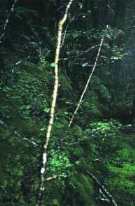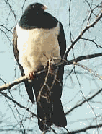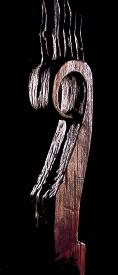The sacred forest, home of Tane, was a source of life, of mythology, and of inspiration for the Maori; the forest shaped and sculpted the people.
(the images loading are beautiful - please be patient. They're worth seeing)
 |
The lush forests of NZ, and in the South Island, the rain forests, were nothing like the island atoll environment that Maori had arrived from. |
The forests in New Zealand brooded. Their silences, broken occasionally by a bird call, a falling branch or the shuffle of a lizard, and perhaps the trickling of a stream or even crashing of a torrent, shaped the psyche of the new arrival - sharpening and honing the acute Maori awareness of the spirit.
While the forest provided food, tools, weapons, houses, canoes, food, and even ornaments, the richness of the primeval paradise that Maori had discovered was a source of spiritual sustenance and reassurance.
With a great deal of tapu in life, food had to be gathered propitiously.
There was no shortage of food - birds, insects, grubs, bats, rats, dogs, eels, fish, mussels, berries, pollen, cabbage tree roots, nikau shoots, watercress, fungi and even earthworms.
Including, at one time, the now vanished Moa, a large flightless bird (skeleton below) - the rock is 4 feet high
The degrees of tapu meant that women could not go near the whare mata, or bird fowlers building, when men were preparing to catch birds.
Prolific in the forest is the NZ pigeon (below), and when setting snares, charms were sung and certain phrases avoided.
| The name of the prey could not be spoken lest they overhear their name and flee. The birds, and any prey, were not anthromorphised, but they did have spirit protection |
 |
Trees with high bird populations themselves became tapu, and hunters could not carry cooked food into the forest lest it pollute the place.
 |
All loose bird feathers had to be collected and packed away, and offerings were made to the spirits at secret places. |
In the forest, a man was never alone. Not only was the forest the home of the various gods, but also other beings .... they were perhaps hiding, or invisible, but they were always there - fairies, elves, taniwha, or ogres, and the Turehu.
The Turehu were a fair-headed folk, a race of people who had always been here, predating Maori by millenia - they were said to own all of the bounty of the forest.
They might be seen only occasionally, but on misty days could be heard talking, or singing, or even playing flutes.
In some areas, Tiriwa was the ancestor, a fairy chieftan.
Carvings were erected at various places in the forest, and near the settlements, to mark territory, but also to house some spirits. For example, the image below is a haunting sculpture, the upper section of a carved post, dwelling-place for Uenuku, found at Lake Ngaroto, near Te Awamutu.
 |
Uenuku was carried to New Zealand in the Tainui canoe, in a wooden carving about 25 cm tall. After arrival, the spirit was transferred into this 267 cm tall post. |
more
This
Web Directory will always be dynamic ~
all details are flexible and changing